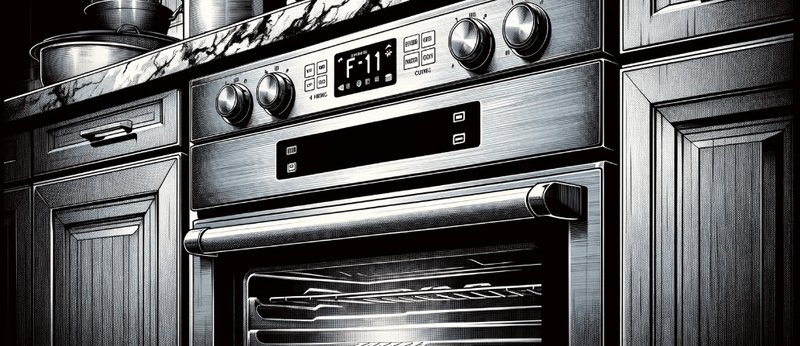
The F1 error in Frigidaire ovens and ranges often indicates a problem with the electronic oven control (EOC) or a faulty touchpad. Imagine it as your oven trying to have a conversation with you about a glitch in its system. Just like how our computers sometimes need a reboot, our ovens might need a bit of attention to keep them running smoothly. The good news? With a bit of foresight and care, it’s possible to minimize the chances of encountering this error again. Let’s explore how you can keep your oven in tip-top shape and prevent that F1 message from popping up in the future.
Understanding the F1 Error Code
First things first, let’s dive into what an F1 error code means for your Frigidaire oven. Think of it as your oven’s way of waving a little red flag. The F1 error typically signals a problem with the oven’s electronic control system. In more technical terms, it can mean that there’s a communication breakdown between the oven’s main control board and the keypad. If you imagine the control board as the brain of your oven, and the keypad as the hands, the F1 code occurs when these two parts aren’t quite in sync.
Why does this breakdown happen? Well, over time, electronic components can degrade or falter due to factors like heat and humidity, both of which are pretty common in kitchens. It’s a bit like how too much moisture can affect your phone’s performance. If the internal components of the oven become dusty or the connections loosen, it may trigger the F1 alert. Additionally, it could be caused by a faulty sensor that sends the wrong signals back to the control board, similar to how a faulty thermometer might give you an inaccurate temperature reading.
Understanding the root cause is crucial because it helps you decide on the right course of action. Sometimes, the fix can be as simple as resetting the oven by turning off the circuit breaker, which effectively gives the oven a fresh start. If that doesn’t work, though, you might need to dig a little deeper.
Regular Maintenance for Your Oven
Here’s the deal: regular maintenance is your first line of defense against the F1 error code. Just like how you’d service a car to keep it running smoothly, your oven benefits from a bit of TLC, too. The first step is keeping your oven clean. Grease, food particles, and dust can accumulate over time, interfering with the oven’s electronic components. Imagine trying to talk through a mouthful of food—that’s what it’s like for a control board cluttered with debris.
To clean your oven, start by ensuring it’s cool and disconnected from the power supply. Using a light detergent and water, gently clean the surfaces, paying particular attention to the areas around the control panel and the keypad. Be careful not to use too much water, as excess moisture can cause more harm than good by seeping into electronic parts.
Aside from cleaning, it’s also helpful to check the oven’s condition regularly. This includes inspecting for any frayed wires or loose connections that could be causing intermittent issues. Think of it like checking your car’s oil level or tire pressure—small checks can prevent major problems down the line. If you notice anything out of place, it might be time to consult a professional or refer to the oven’s manual for guidance.
Prevention and Care Tips
Preventing the F1 code is a bit like fortifying a castle. It requires a proactive approach. One effective strategy is to ensure your oven is properly ventilated. Heat buildup is a known culprit for electronic malfunctions. Make sure that your oven is installed in a well-ventilated area and that the vents are unobstructed. Much like ensuring steady airflow in a room keeps it comfortable, good ventilation for your oven prolongs its lifespan.
Temperature fluctuations can also impact your oven’s electronic components. Avoid subjecting your oven to extreme temperature changes, which might mean being mindful of opening the oven door less frequently when cooking, hence preserving the internal heat and not overworking the control system.
Finally, consider investing in a surge protector for your oven. Power surges can lead to a myriad of electronic issues and the F1 error is no exception. A surge protector acts like an umbrella in a rainstorm, shielding your delicate electronics from sudden spikes in power. This relatively inexpensive device can save you from the headache of future F1 errors by stabilizing the power supply to your oven.
With these tips, the hope is to keep that F1 error at bay, allowing you to focus on the joy of cooking rather than dealing with unexpected oven malfunctions. Remember, a little preventative care goes a long way in ensuring your Frigidaire oven runs smoothly for years to come.